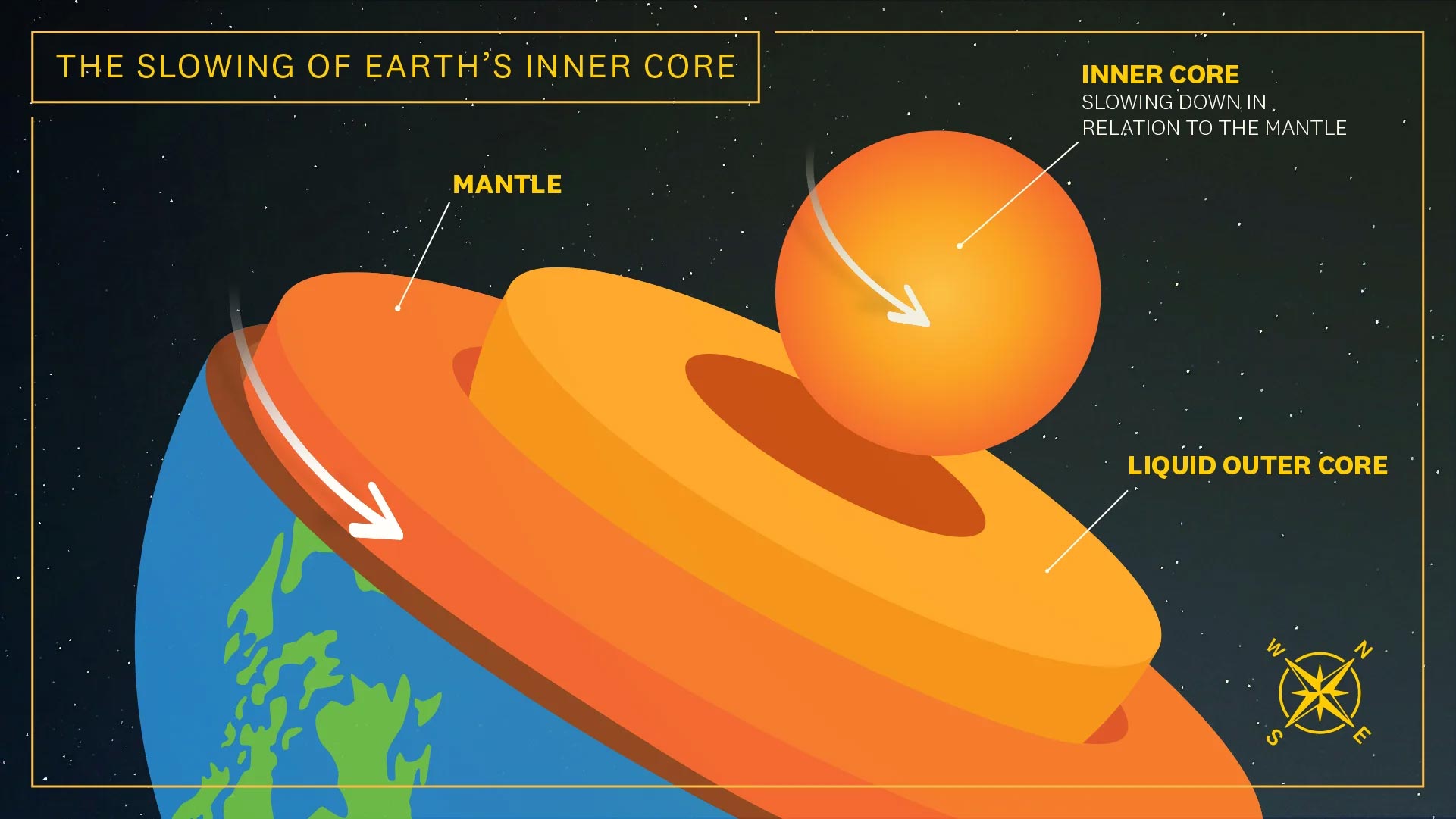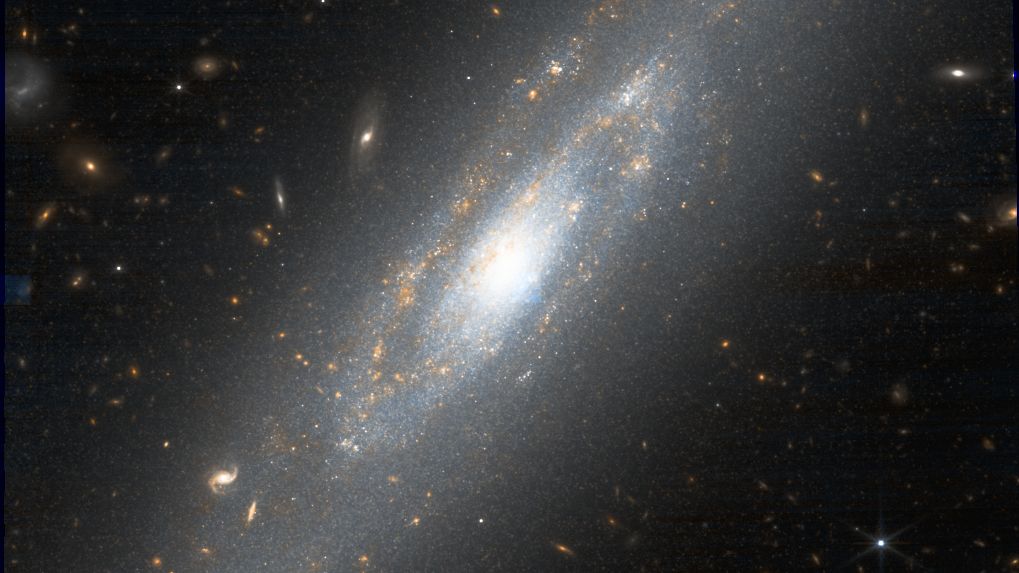The inner core began to decrease its speed around 2010, moving slower than the Earth’s surface. Credit: USC
A new study provides clear evidence that the Earth’s inner core began to decrease its speed around 2010.
USC scientists have discovered that the Earth’s inner core is slowing down relative to the planet’s surface, a phenomenon that started around 2010 after decades of the opposite trend. This significant shift was detected through detailed seismic data analysis from earthquakes and nuclear tests. The slowdown is influenced by the dynamics of the surrounding liquid outer core and the gravitational pull from the Earth’s mantle, potentially affecting Earth’s rotation slightly.
Inner Core Dynamics
Scientists at USC have proven that the Earth’s inner core is backtracking — slowing down — in relation to the planet’s surface, as shown in new research published on June 12 in the journal Nature.
The scientific community has long debated the movement of the inner core, with some studies suggesting it rotates faster than the Earth’s surface. However, recent research from USC conclusively shows that starting around 2010, the inner core has slowed down, now moving at a pace slower than that of the planet’s surface.
“When I first saw the seismograms that hinted at this change, I was stumped,” said John Vidale, Dean’s Professor of Earth Sciences at the USC Dornsife College of Letters, Arts and Sciences. “But when we found two dozen more observations signaling the same pattern, the result was inescapable. The inner core had slowed down for the first time in many decades. Other scientists have recently argued for similar and different models, but our latest study provides the most convincing resolution.”
The Relativity of Backtracking and Slowing Down
The inner core is considered to be reversing and backtracking relative to the planet’s surface due to moving slightly slower instead of faster than the Earth’s mantle for the first time in approximately 40 years. Relative to its speed in previous decades, the inner core is slowing down.
The inner core is a solid iron-nickel sphere surrounded by the liquid iron-nickel outer core. Roughly the size of the moon, the inner core sits more than 3,000 miles under our feet and presents a challenge to researchers: It can’t be visited or viewed. Scientists must use the seismic waves of earthquakes to create renderings of the inner core’s movement.
A New Take on a Repetitive Approach
Vidale and Wei Wang of the Chinese Academy of Sciences utilized waveforms and repeating earthquakes in contrast to other research. Repeating earthquakes are seismic events that occur at the same location to produce identical seismograms.
In this study, the researchers compiled and analyzed seismic data recorded around the South Sandwich Islands from 121 repeating earthquakes that occurred between 1991 and 2023. They have also utilized data from twin Soviet nuclear tests between 1971 and 1974, as well as repeated French and American nuclear tests from other studies of the inner core.
Vidale said the inner core’s slowing speed was caused by the churning of the liquid iron outer core that surrounds it, which generates Earth’s magnetic field, as well as gravitational tugs from the dense regions of the overlying rocky mantle.
The Impact on the Earth’s Surface
The implications of this change in the inner core’s movement for Earth’s surface can only be speculated. Vidale said the backtracking of the inner core may alter the length of a day by fractions of a second: “It’s very hard to notice, on the order of a thousandth of a second, almost lost in the noise of the churning oceans and atmosphere.”
The USC scientists’ future research aspires to chart the trajectory of the inner core in even greater detail to reveal exactly why it is shifting.
“The dance of the inner core might be even more lively than we know so far,” Vidale said.
Reference: “Inner core backtracking by seismic waveform change reversals” by Wei Wang, John E. Vidale, Guanning Pang, Keith D. Koper and Ruoyan Wang, 12 June 2024, Nature.
DOI: 10.1038/s41586-024-07536-4
In addition to Vidale, other study authors include Ruoyan Wang of USC Dornsife, Wei Wang of the Chinese Academy of Sciences, Guanning Pang of Cornell University and Keith Koper of the University of Utah.
This research was supported by the National Science Foundation (EAR-2041892) and the Institute of Geology and Geophysics of the Chinese Academy of Sciences (IGGCAS-201904 and IGGCAS-202204).

Dr. Thomas Hughes is a UK-based scientist and science communicator who makes complex topics accessible to readers. His articles explore breakthroughs in various scientific disciplines, from space exploration to cutting-edge research.








